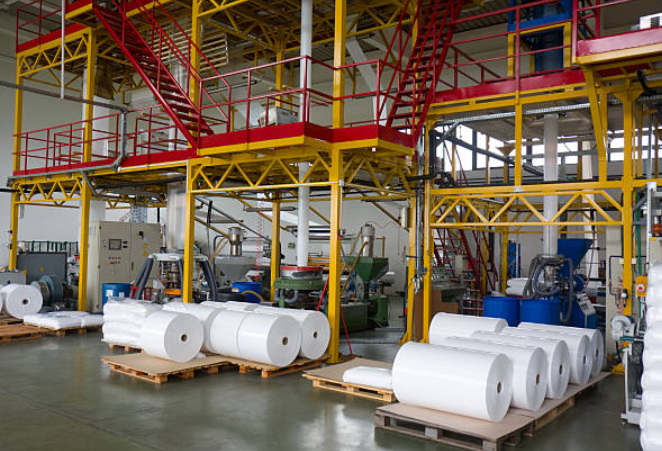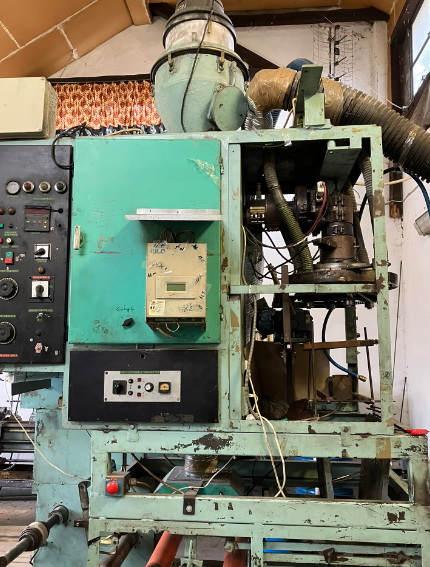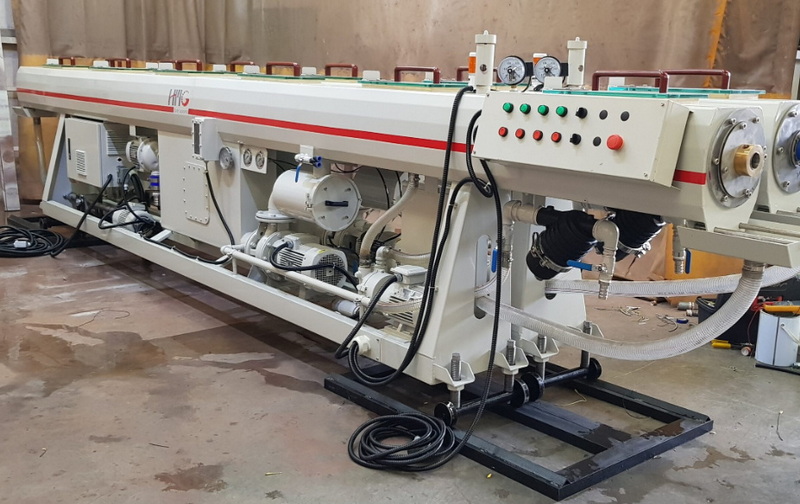Content Menu
● Introduction to Extrusion Aluminum Gutter Equipment
>> Key Components of Extrusion Aluminum Gutter Equipment
● Methods of Aluminum Extrusion for Gutter Equipment
>> Direct Extrusion
>> Indirect Extrusion
● Advantages of Extrusion Aluminum Gutter Equipment
● Applications of Extrusion Aluminum Gutter Equipment
● Features and Performance of Extrusion Aluminum Gutter Equipment
● Colours and Finishes
● Comparison with Cast Aluminum Gutters
● Common Faults and Solutions in Extrusion Aluminum Gutter Equipment
● Maintenance and Upkeep of Extrusion Aluminum Gutter Equipment
● Environmental Impact of Extrusion Aluminum Gutter Equipment
● Future Developments in Extrusion Aluminum Gutter Equipment
● Conclusion
● FAQ
>> 1. What is the primary advantage of using extrusion aluminum gutter equipment?
>> 2. How does extrusion aluminum gutter equipment compare to cast aluminum gutters in terms of durability?
>> 3. What are the common finishes available for extruded aluminum gutters?
>> 4. What are some common operational faults in extrusion aluminum gutter equipment?
>> 5. How does the manufacturing process of extruded aluminum gutters differ from cast aluminum gutters?
Extrusion aluminum gutter equipment is a crucial component in the manufacturing process of aluminum gutters, which are widely used in residential and commercial buildings for rainwater management. The process of extrusion allows for the creation of complex profiles with precise dimensions, making it ideal for producing gutters that are both durable and aesthetically pleasing. In this article, we will delve into the key features of extrusion aluminum gutter equipment, its applications, and the benefits it offers over other types of gutter systems.

Introduction to Extrusion Aluminum Gutter Equipment
Extrusion aluminum gutter equipment involves forcing heated aluminum alloy through a die to create specific shapes with a constant cross-section. This process is highly versatile and efficient, allowing for the production of intricate designs that are not easily achievable through traditional manufacturing methods.
Key Components of Extrusion Aluminum Gutter Equipment
1. Billet: The raw material used in extrusion, typically in the form of cylindrical logs or billets composed of aluminum alloy. The quality of the billet is crucial as it directly affects the final product's strength and durability.
2. Extrusion Press: The machinery responsible for applying pressure to the billet, forcing it through a die to shape the aluminum into the desired profile. Extrusion presses vary in size and capacity, ranging from small manual presses to large industrial machines capable of producing complex profiles.
3. Die: A specialized tool with an aperture through which the aluminum is extruded to create the desired cross-sectional shape. Dies are precision-made to ensure that the extruded product meets exact specifications.
Methods of Aluminum Extrusion for Gutter Equipment
Direct Extrusion
In direct extrusion, the billet is placed in a chamber within the extrusion press, where it is heated to a temperature suitable for extrusion. A ram applies pressure to the heated billet, forcing it through the die to create the desired profile. Direct extrusion is the most common method and is ideal for producing simple, solid shapes. It offers high production rates and is cost-effective for large-scale manufacturing.
Indirect Extrusion
Indirect extrusion involves placing the die in the chamber and securing the billet to the end of the ram. As the ram moves forward, it pushes the billet through the stationary die, resulting in the extruded profile. Indirect extrusion offers greater control over the extrusion process and is often used for producing complex hollow profiles. This method is particularly useful for creating gutters with intricate designs or for applications requiring precise dimensional accuracy.
Advantages of Extrusion Aluminum Gutter Equipment
- Design Flexibility: Extrusion allows for the creation of intricate profiles with precise dimensions, enabling designers to achieve complex geometries and custom shapes. This flexibility is invaluable in architectural projects where unique designs are required.
- Cost Efficiency: Extrusion offers high production rates and minimal material waste, making it a cost-effective manufacturing solution for both large and small-scale production runs. The efficiency of the process helps reduce overall production costs.
- Lightweight and Durable: Aluminum extrusions possess a high strength-to-weight ratio, making them ideal for applications where lightweight yet durable materials are required. This property is particularly beneficial for gutters, as it allows them to withstand weather conditions without adding excessive weight to the building structure.
- Corrosion Resistance: Aluminum naturally forms a protective oxide layer, providing excellent corrosion resistance, making extruded aluminum suitable for outdoor and marine applications. This resistance ensures that the gutters remain functional over a long period without significant degradation.
Applications of Extrusion Aluminum Gutter Equipment
Extrusion aluminum gutter equipment is used to produce gutters for various applications, including:
- High Capacity Gutters: Suitable for traditional or modern buildings, these gutters are designed to handle large volumes of water efficiently. They are particularly useful in areas with heavy rainfall.
- Flush & Projecting Eaves Applications: Extruded aluminum gutters can be adapted for both flush and projecting eaves, offering versatility in architectural designs. This adaptability makes them suitable for a wide range of building styles.
- Long Life Alternative to PVC Gutters: Extruded aluminum gutters offer a durable and long-lasting alternative to PVC gutters, with a life expectancy of up to 40 years in rural areas. This longevity reduces maintenance costs and the need for frequent replacements.
Features and Performance of Extrusion Aluminum Gutter Equipment
- Seamless Design: Extruded gutters are seamless, minimizing the risk of leaks and enhancing overall performance. This seamless construction ensures that water flows smoothly without interruptions.
- Thermal Movement Accommodation: Designed to fully accommodate thermal movement at every joint, reducing the risk of damage due to temperature changes. This feature is crucial for maintaining the structural integrity of the gutters over time.
- Corrosion Resistance and Recyclability: Extruded aluminum gutters are highly corrosion resistant and 100% recyclable, making them an environmentally friendly option. The recyclability of aluminum reduces waste and supports sustainable practices.
Colours and Finishes
Extruded aluminum gutters are available in a variety of finishes, including:
- BBA Approved Polyester Powder Coatings: Factory-applied coatings in a range of colours. These coatings enhance the aesthetic appeal of the gutters while providing additional protection against corrosion.
- Plain Mill Finish: Suitable for on-site painting. This finish allows homeowners to match the gutters with their building's color scheme.

Comparison with Cast Aluminum Gutters
Extruded aluminum gutters differ from cast aluminum gutters in several key aspects:
- Manufacturing Process: Extruded gutters are made by forcing molten aluminum through a die, while cast gutters are made by pouring molten aluminum into a mold. The extrusion process allows for more precise control over the final product's dimensions and strength.
- Strength and Durability: Extruded gutters are generally stronger and more durable than cast gutters. This is due to the uniformity of the extrusion process, which ensures consistent material properties throughout the gutter.
- Appearance and Finish: Extruded gutters have a smooth, uniform appearance, while cast gutters have a more textured look. The smooth finish of extruded gutters makes them easier to clean and maintain.
Common Faults and Solutions in Extrusion Aluminum Gutter Equipment
While extrusion aluminum gutter equipment is reliable, there are potential operational faults that can occur:
1. Poor Bearing Lubrication: Causes uneven extrusion and equipment wear. Solution: Check and add lubricant regularly to maintain smooth operation.
2. Main Motor Speed Issues: Causes inconsistent extrusion quality. Solution: Check the motor control system and adjust as necessary to ensure consistent speed.
3. Lube Oil System Pressure: Causes equipment malfunction. Solution: Adjust the pressure regulator valve to maintain optimal pressure levels.
4. Air or Oil Pressure Leaks: Causes equipment failure. Solution: Check for leaks and seal them promptly to prevent further damage.
5. Extrusion System Torque Issues: Causes equipment damage. Solution: Check for obstructions and adjust the extrusion system to ensure proper alignment and operation.
Maintenance and Upkeep of Extrusion Aluminum Gutter Equipment
Regular maintenance is essential to ensure the longevity and efficiency of extrusion aluminum gutter equipment. This includes:
- Regular Cleaning: Cleaning the equipment and dies regularly helps prevent buildup and ensures smooth operation.
- Lubrication Checks: Regularly checking and maintaining lubrication levels prevents wear and tear on moving parts.
- Inspection for Wear: Regular inspections help identify worn parts early, allowing for timely replacements and preventing equipment failure.
Environmental Impact of Extrusion Aluminum Gutter Equipment
The use of extrusion aluminum gutter equipment supports sustainable practices due to the recyclability of aluminum. Aluminum is one of the most recycled metals globally, and its recycling process requires only about 5% of the energy needed to produce primary aluminum. This reduces the environmental footprint of the manufacturing process and supports eco-friendly building practices.
Future Developments in Extrusion Aluminum Gutter Equipment
As technology advances, there is a growing focus on improving the efficiency and sustainability of extrusion processes. Future developments may include:
- Energy-Efficient Presses: Newer models of extrusion presses are being designed to consume less energy while maintaining production efficiency.
- Advanced Materials: Research into new aluminum alloys and composite materials could further enhance the strength and durability of extruded gutters.
- Automated Systems: Increased automation in the extrusion process could improve precision and reduce labor costs.
Conclusion
Extrusion aluminum gutter equipment offers a versatile and efficient method for producing high-quality gutters with precise dimensions. Its advantages include design flexibility, cost efficiency, lightweight durability, and corrosion resistance. Whether for modern or traditional buildings, extruded aluminum gutters provide a reliable and aesthetically pleasing solution for rainwater management.

FAQ
1. What is the primary advantage of using extrusion aluminum gutter equipment?
The primary advantage of using extrusion aluminum gutter equipment is its ability to produce gutters with complex profiles and precise dimensions, making it highly versatile for various architectural designs.
2. How does extrusion aluminum gutter equipment compare to cast aluminum gutters in terms of durability?
Extruded aluminum gutters are generally stronger and more durable than cast gutters, offering better resistance to bending and warping, especially in harsh weather conditions.
3. What are the common finishes available for extruded aluminum gutters?
Extruded aluminum gutters are available in a range of finishes, including BBA approved polyester powder coatings and plain mill finish for on-site painting.
4. What are some common operational faults in extrusion aluminum gutter equipment?
Common faults include poor bearing lubrication, main motor speed issues, lube oil system pressure problems, air or oil pressure leaks, and extrusion system torque issues.
5. How does the manufacturing process of extruded aluminum gutters differ from cast aluminum gutters?
Extruded aluminum gutters are made by forcing molten aluminum through a die, while cast gutters are made by pouring molten aluminum into a mold.






















